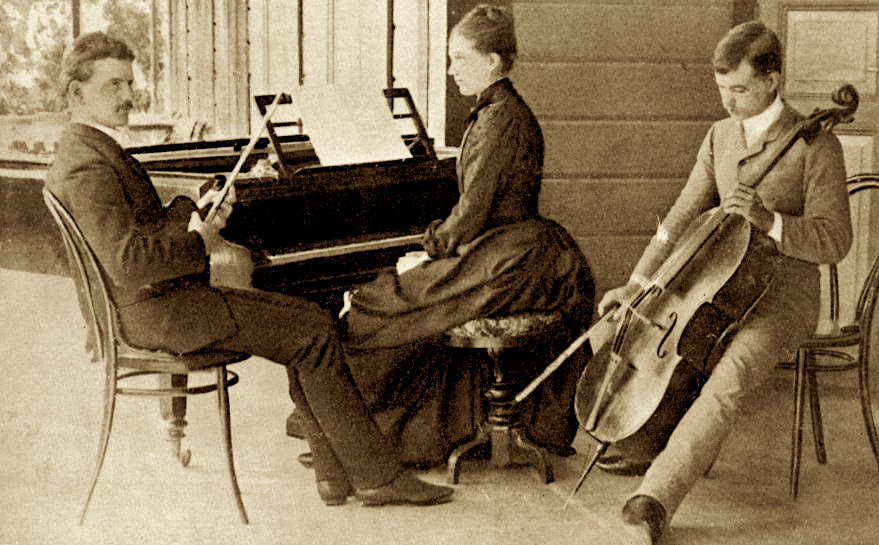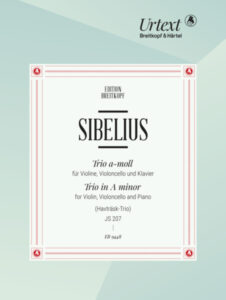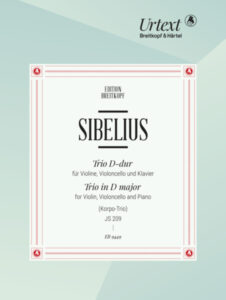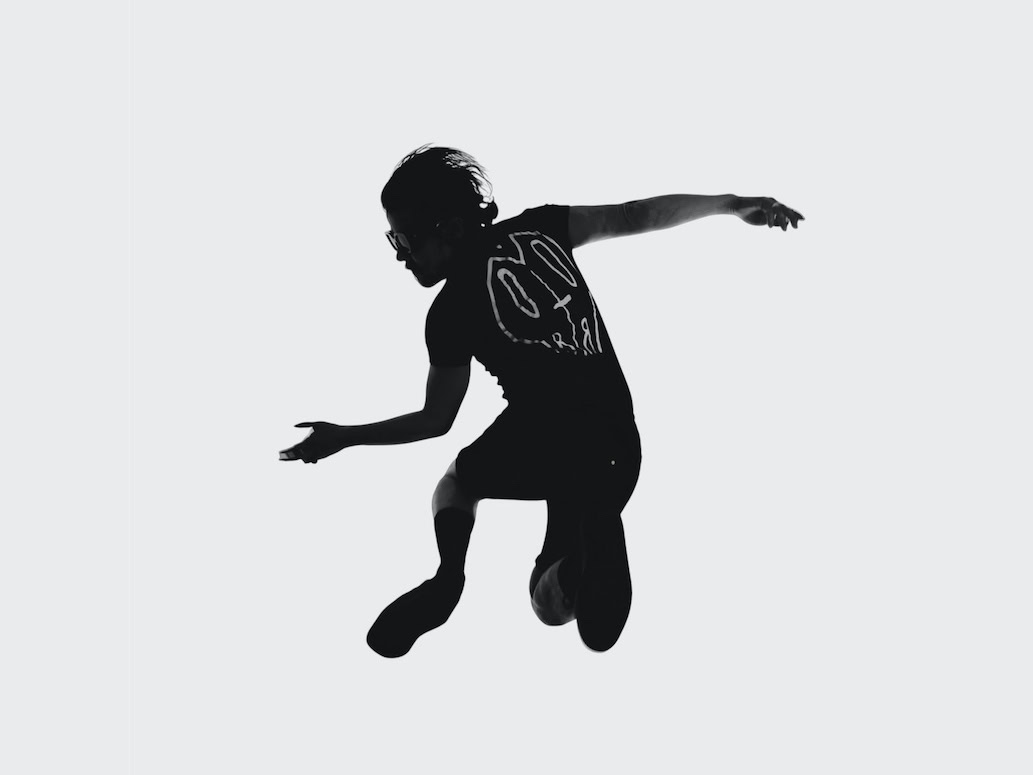Piano trio for the siblings
Two early works by Jean Sibelius have been edited here for the first time. Certain string passages foreshadow the later symphonist.

Would Jean Sibelius agree to the publication of these early works? The statements that the composer made in old age about his then lost or unpublished chamber music manuscripts vary. There is talk of "burning", another time he said: "It was the time when one was developing."
Before and during his student days, Sibelius composed a piano trio for his siblings every summer and performed them during the vacations with relatives and friends. He played the violin part himself. The place names "Havträsk" and "Korpo" go back to this genesis, but do not originate from the composer. Five multi-movement trios were composed between 1883 and 1888, none of which were printed during Sibelius' lifetime. He did not compose any more works for this instrumentation later on. His heirs donated the manuscripts of the two present piano trios to the National Library of Finland in 1982.
The editors Folke Gräsbeck and Anna Pulkkis have meticulously prepared these sources in 2021. The critical report in both volumes is almost as extensive as the musical text. There are even two versions of the first movement of the "Havträsk" trio. If you listen to the interpretations on the net, you'll be leafing through the pages!
In comparison, the shorter trio Havträsk in A minor (22 minutes) is the more catchy piece and is completely dominated by the spirit of Romanticism. It poses fewer technical challenges for the performers. In the more than half-hour Corpo-In the second trio, much more is demanded of them; as a violinist, Sibelius must have practiced a lot of Paganini! This second trio points to the later Sibelius. The second movement in particular, entitled "Fantasia", experiments with timbres, playing techniques and harmonies. Occasionally, the instrumental movement comes across as somewhat wooden, for example when the piano plays alone and accompanies its melody with crotchets for long stretches. However, when the strings take over in pairs, one can hear the tonal language of the later symphonies. There, the formal blocks seem much more coherent than in these early works. The master has indeed made great progress!
Tracing the genius of this important symphonist is probably the justification for examining his early works, even if he did not release them for printing.

Jean Sibelius: Trio in A minor "Havträsk" JS 207, for violin, violoncello and piano, edited by Folke Gräsbeck and Anna Pulkkis, EB 9448, € 39.90, Breitkopf &Härtel, Wiesbaden
id.: Trio in D major "Korpo" JS 209, EB 9449, € 39.90








